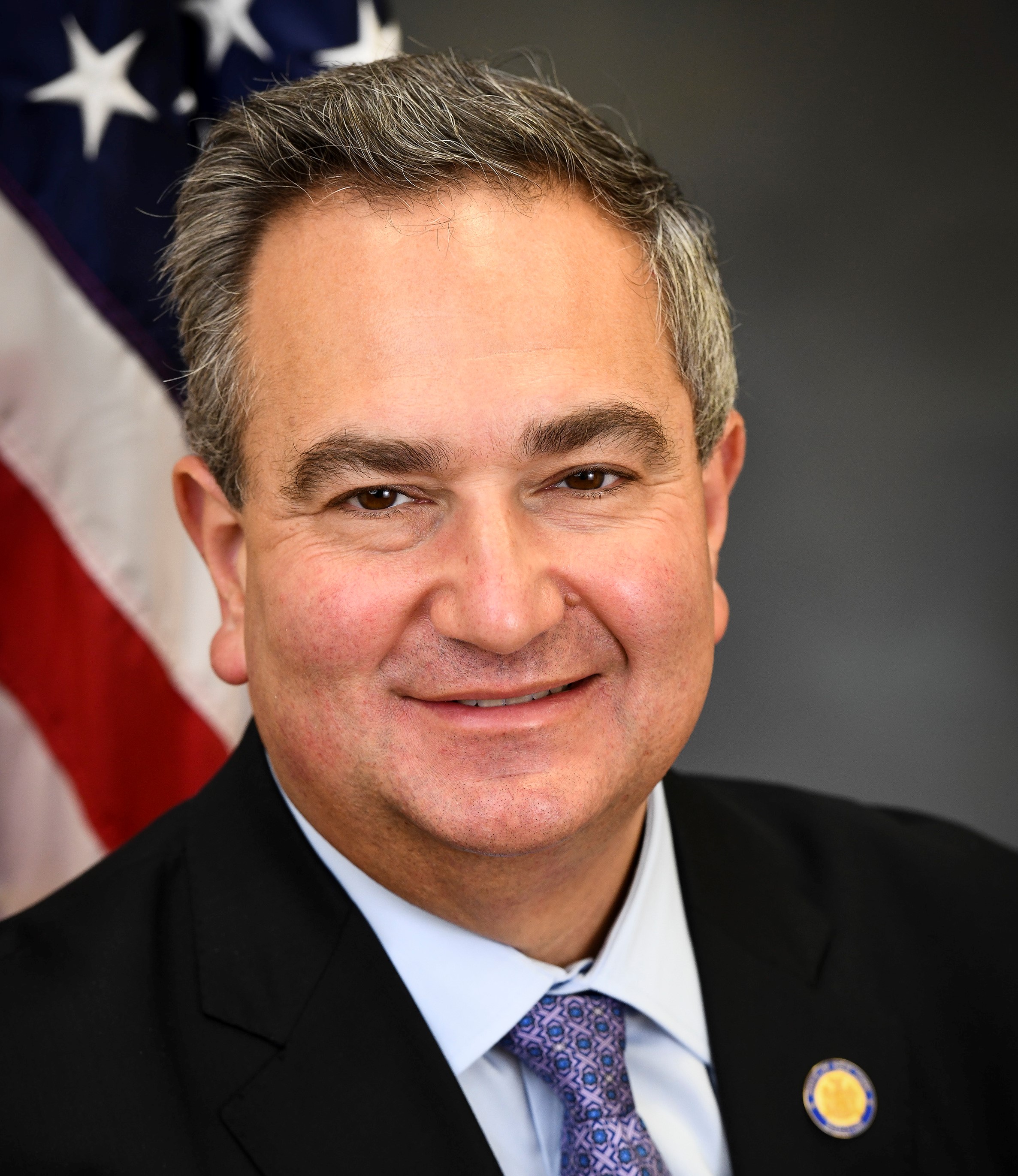S T A T E O F N E W Y O R K
________________________________________________________________________
4484
2023-2024 Regular Sessions
I N S E N A T E
February 9, 2023
___________
Introduced by Sens. GALLIVAN, BORRELLO, HELMING, O'MARA, ORTT, STEC,
TEDISCO -- read twice and ordered printed, and when printed to be
committed to the Committee on Codes
AN ACT to amend the criminal procedure law, in relation to adding
certain offenses committed by a family member to the list of crimes
qualifying for bail
THE PEOPLE OF THE STATE OF NEW YORK, REPRESENTED IN SENATE AND ASSEM-
BLY, DO ENACT AS FOLLOWS:
Section 1. The opening paragraph and paragraphs (t) and (u) of subdi-
vision 4 of section 510.10 of the criminal procedure law, the opening
paragraph as amended by section 2 of part UU of chapter 56 of the laws
of 2020, paragraph (t) as amended and paragraph (u) as added by section
2 of subpart B of part UU of chapter 56 of the laws of 2022, are amended
and a new paragraph (v) is added to read as follows:
Where the principal stands charged with a qualifying offense, the
court, unless otherwise prohibited by law, may in its discretion release
the principal pending trial on the principal's own recognizance or under
non-monetary conditions, fix bail, or, where the defendant is charged
with a qualifying offense [which is a felony], the court may commit the
principal to the custody of the sheriff. A principal stands charged with
a qualifying offense for the purposes of this subdivision when he or she
stands charged with:
(t) any felony or class A misdemeanor involving harm to an identifi-
able person or property, or any charge of criminal possession of a
firearm as defined in section 265.01-b of the penal law, where such
charge arose from conduct occurring while the defendant was released on
his or her own recognizance, released under conditions, or had yet to be
arraigned after the issuance of a desk appearance ticket for a separate
felony or class A misdemeanor involving harm to an identifiable person
or property, or any charge of criminal possession of a firearm as
defined in section 265.01-b of the penal law, provided, however, that
the prosecutor must show reasonable cause to believe that the defendant
committed the instant crime and any underlying crime. For the purposes
of this subparagraph, any of the underlying crimes need not be a quali-
EXPLANATION--Matter in ITALICS (underscored) is new; matter in brackets
[ ] is old law to be omitted.
LBD06340-01-3
S. 4484 2
fying offense as defined in this subdivision. For the purposes of this
paragraph, "harm to an identifiable person or property" shall include
but not be limited to theft of or damage to property. However, based
upon a review of the facts alleged in the accusatory instrument, if the
court determines that such theft is negligible and does not appear to be
in furtherance of other criminal activity, the principal shall be
released on his or her own recognizance or under appropriate non-mone-
tary conditions; [or]
(u) criminal possession of a weapon in the third degree as defined in
subdivision three of section 265.02 of the penal law or criminal sale of
a firearm to a minor as defined in section 265.16 of the penal law[.];
OR
(V) ANY OF THE FOLLOWING AGGRAVATED FAMILY OFFENSES AS DEFINED IN
SECTION 240.75 OF THE PENAL LAW WHERE THE PRINCIPAL AND THE PERSON
AGAINST WHOM THE OFFENSE WAS COMMITTED WERE MEMBERS OF THE SAME FAMILY
OR HOUSEHOLD AS DEFINED IN SUBDIVISION ONE OF SECTION 530.11; AN OFFENSE
DEFINED IN SECTION 120.00 (ASSAULT IN THE THIRD DEGREE); SECTION 120.13
(MENACING IN THE FIRST DEGREE); SECTION 120.14 (MENACING IN THE SECOND
DEGREE); SECTION 120.15 (MENACING IN THE THIRD DEGREE); SECTION 120.20
(RECKLESS ENDANGERMENT IN THE SECOND DEGREE); SECTION 120.45 (STALKING
IN THE FOURTH DEGREE); SECTION 120.50 (STALKING IN THE THIRD DEGREE);
SECTION 120.55 (STALKING IN THE SECOND DEGREE); SECTION 121.11 (CRIMINAL
OBSTRUCTION OF BREATHING OR BLOOD CIRCULATION); SUBDIVISION ONE OF
SECTION 125.15 (MANSLAUGHTER IN THE SECOND DEGREE); SECTION 135.05
(UNLAWFUL IMPRISONMENT IN THE SECOND DEGREE); SECTION 135.10 (UNLAWFUL
IMPRISONMENT IN THE FIRST DEGREE); SECTION 135.60 (COERCION IN THE THIRD
DEGREE); SECTION 135.61 (COERCION IN THE SECOND DEGREE); SECTION 135.65
(COERCION IN THE FIRST DEGREE); SECTION 140.20 (BURGLARY IN THE THIRD
DEGREE); SECTION 140.25 (BURGLARY IN THE SECOND DEGREE); SECTION 145.00
(CRIMINAL MISCHIEF IN THE FOURTH DEGREE); SECTION 145.05 (CRIMINAL
MISCHIEF IN THE THIRD DEGREE); SECTION 145.10 (CRIMINAL MISCHIEF IN THE
SECOND DEGREE); SECTION 145.12 (CRIMINAL MISCHIEF IN THE FIRST DEGREE);
SECTION 145.14 (CRIMINAL TAMPERING IN THE THIRD DEGREE); SECTION 240.25
(HARASSMENT IN THE FIRST DEGREE); SUBDIVISION ONE, TWO OR FOUR OF
SECTION 240.30 (AGGRAVATED HARASSMENT IN THE SECOND DEGREE) OF THE PENAL
LAW; OR ANY ATTEMPT OR CONSPIRACY TO COMMIT ANY OF THE FOREGOING
OFFENSES.
§ 2. The opening paragraph and subparagraphs (xx) and (xxi) of para-
graph (b) of subdivision 1 of section 530.20 of the criminal procedure
law, the opening paragraph as amended by section 3 of part UU of chapter
56 of the laws of 2020, paragraph (xx) as amended and paragraph (xxi) as
added by section 4 of subpart C of part UU of chapter 56 of the laws of
2022, are amended and a new subparagraph (xxii) is added to read as
follows:
Where the principal stands charged with a qualifying offense, the
court, unless otherwise prohibited by law, may in its discretion release
the principal pending trial on the principal's own recognizance or under
non-monetary conditions, fix bail, or, where the defendant is charged
with a qualifying offense [which is a felony], the court may commit the
principal to the custody of the sheriff. The court shall explain its
choice of release, release with conditions, bail or remand on the record
or in writing. A principal stands charged with a qualifying offense when
he or she stands charged with:
(xx) any felony or class A misdemeanor involving harm to an identifi-
able person or property, or any charge of criminal possession of a
firearm as defined in section 265.01-b of the penal law where such
S. 4484 3
charge arose from conduct occurring while the defendant was released on
his or her own recognizance, released under conditions, or had yet to be
arraigned after the issuance of a desk appearance ticket for a separate
felony or class A misdemeanor involving harm to an identifiable person
or property, provided, however, that the prosecutor must show reasonable
cause to believe that the defendant committed the instant crime and any
underlying crime. For the purposes of this subparagraph, any of the
underlying crimes need not be a qualifying offense as defined in this
subdivision. For the purposes of this paragraph, "harm to an identifi-
able person or property" shall include but not be limited to theft of or
damage to property. However, based upon a review of the facts alleged in
the accusatory instrument, if the court determines that such theft is
negligible and does not appear to be in furtherance of other criminal
activity, the principal shall be released on his or her own recognizance
or under appropriate non-monetary conditions; [or]
(xxi) criminal possession of a weapon in the third degree as defined
in subdivision three of section 265.02 of the penal law or criminal sale
of a firearm to a minor as defined in section 265.16 of the penal
law[.]; OR
(XXI) ANY OF THE FOLLOWING AGGRAVATED FAMILY OFFENSES AS DEFINED IN
SECTION 240.75 OF THE PENAL LAW WHERE THE PRINCIPAL AND THE PERSON
AGAINST WHOM THE OFFENSE WAS COMMITTED WERE MEMBERS OF THE SAME FAMILY
OR HOUSEHOLD AS DEFINED IN SUBDIVISION ONE OF SECTION 530.11; AN OFFENSE
DEFINED IN SECTION 120.00 (ASSAULT IN THE THIRD DEGREE); SECTION 120.13
(MENACING IN THE FIRST DEGREE); SECTION 120.14 (MENACING IN THE SECOND
DEGREE); SECTION 120.15 (MENACING IN THE THIRD DEGREE); SECTION 120.20
(RECKLESS ENDANGERMENT IN THE SECOND DEGREE); SECTION 120.45 (STALKING
IN THE FOURTH DEGREE); SECTION 120.50 (STALKING IN THE THIRD DEGREE);
SECTION 120.55 (STALKING IN THE SECOND DEGREE); SECTION 121.11 (CRIMINAL
OBSTRUCTION OF BREATHING OR BLOOD CIRCULATION); SUBDIVISION ONE OF
SECTION 125.15 (MANSLAUGHTER IN THE SECOND DEGREE); SECTION 135.05
(UNLAWFUL IMPRISONMENT IN THE SECOND DEGREE); SECTION 135.10 (UNLAWFUL
IMPRISONMENT IN THE FIRST DEGREE); SECTION 135.60 (COERCION IN THE THIRD
DEGREE); SECTION 135.61 (COERCION IN THE SECOND DEGREE); SECTION 135.65
(COERCION IN THE FIRST DEGREE); SECTION 140.20 (BURGLARY IN THE THIRD
DEGREE); SECTION 140.25 (BURGLARY IN THE SECOND DEGREE); SECTION 145.00
(CRIMINAL MISCHIEF IN THE FOURTH DEGREE); SECTION 145.05 (CRIMINAL
MISCHIEF IN THE THIRD DEGREE); SECTION 145.10 (CRIMINAL MISCHIEF IN THE
SECOND DEGREE); SECTION 145.12 (CRIMINAL MISCHIEF IN THE FIRST DEGREE);
SECTION 145.14 (CRIMINAL TAMPERING IN THE THIRD DEGREE); SECTION 240.25
(HARASSMENT IN THE FIRST DEGREE); SUBDIVISION ONE, TWO OR FOUR OF
SECTION 240.30 (AGGRAVATED HARASSMENT IN THE SECOND DEGREE) OF THE PENAL
LAW; OR ANY ATTEMPT OR CONSPIRACY TO COMMIT ANY OF THE FOREGOING
OFFENSES.
§ 3. The opening paragraph and paragraphs (t) and (u) of subdivision 4
of section 530.40 of the criminal procedure law, the opening paragraph
as amended by section 4 of part UU of chapter 56 of the laws of 2020,
paragraph (t) as amended and paragraph (u) as added by section 4 of
subpart B of part UU of chapter 56 of the laws of 2022, are amended and
a new paragraph (v) is added to read as follows:
Where the principal stands charged with a qualifying offense, the
court, unless otherwise prohibited by law, may in its discretion release
the principal pending trial on the principal's own recognizance or under
non-monetary conditions, fix bail, or, where the defendant is charged
with a qualifying offense [which is a felony], the court may commit the
principal to the custody of the sheriff. The court shall explain its
S. 4484 4
choice of release, release with conditions, bail or remand on the record
or in writing. A principal stands charged with a qualifying offense for
the purposes of this subdivision when he or she stands charged with:
(t) any felony or class A misdemeanor involving harm to an identifi-
able person or property, or any charge of criminal possession of a
firearm as defined in section 265.01-b of the penal law, where such
charge arose from conduct occurring while the defendant was released on
his or her own recognizance, released under conditions, or had yet to be
arraigned after the issuance of a desk appearance ticket for a separate
felony or class A misdemeanor involving harm to an identifiable person
or property, or any charge of criminal possession of a firearm as
defined in section 265.01-b of the penal law, provided, however, that
the prosecutor must show reasonable cause to believe that the defendant
committed the instant crime and any underlying crime. For the purposes
of this subparagraph, any of the underlying crimes need not be a quali-
fying offense as defined in this subdivision. For the purposes of this
paragraph, "harm to an identifiable person or property" shall include
but not be limited to theft of or damage to property. However, based
upon a review of the facts alleged in the accusatory instrument, if the
court determines that such theft is negligible and does not appear to be
in furtherance of other criminal activity, the principal shall be
released on his or her own recognizance or under appropriate non-mone-
tary conditions; [or]
(u) criminal possession of a weapon in the third degree as defined in
subdivision three of section 265.02 of the penal law or criminal sale of
a firearm to a minor as defined in section 265.16 of the penal law[.];
OR
(V) ANY OF THE FOLLOWING AGGRAVATED FAMILY OFFENSES AS DEFINED IN
SECTION 240.75 OF THE PENAL LAW WHERE THE PRINCIPAL AND THE PERSON
AGAINST WHOM THE OFFENSE WAS COMMITTED WERE MEMBERS OF THE SAME FAMILY
OR HOUSEHOLD AS DEFINED IN SUBDIVISION ONE OF SECTION 530.11; AN OFFENSE
DEFINED IN SECTION 120.00 (ASSAULT IN THE THIRD DEGREE); SECTION 120.13
(MENACING IN THE FIRST DEGREE); SECTION 120.14 (MENACING IN THE SECOND
DEGREE); SECTION 120.15 (MENACING IN THE THIRD DEGREE); SECTION 120.20
(RECKLESS ENDANGERMENT IN THE SECOND DEGREE); SECTION 120.45 (STALKING
IN THE FOURTH DEGREE); SECTION 120.50 (STALKING IN THE THIRD DEGREE);
SECTION 120.55 (STALKING IN THE SECOND DEGREE); SECTION 121.11 (CRIMINAL
OBSTRUCTION OF BREATHING OR BLOOD CIRCULATION); SUBDIVISION ONE OF
SECTION 125.15 (MANSLAUGHTER IN THE SECOND DEGREE); SECTION 135.05
(UNLAWFUL IMPRISONMENT IN THE SECOND DEGREE); SECTION 135.10 (UNLAWFUL
IMPRISONMENT IN THE FIRST DEGREE); SECTION 135.60 (COERCION IN THE THIRD
DEGREE); SECTION 135.61 (COERCION IN THE SECOND DEGREE); SECTION 135.65
(COERCION IN THE FIRST DEGREE); SECTION 140.20 (BURGLARY IN THE THIRD
DEGREE); SECTION 140.25 (BURGLARY IN THE SECOND DEGREE); SECTION 145.00
(CRIMINAL MISCHIEF IN THE FOURTH DEGREE); SECTION 145.05 (CRIMINAL
MISCHIEF IN THE THIRD DEGREE); SECTION 145.10 (CRIMINAL MISCHIEF IN THE
SECOND DEGREE); SECTION 145.12 (CRIMINAL MISCHIEF IN THE FIRST DEGREE);
SECTION 145.14 (CRIMINAL TAMPERING IN THE THIRD DEGREE); SECTION 240.25
(HARASSMENT IN THE FIRST DEGREE); SUBDIVISION ONE, TWO OR FOUR OF
SECTION 240.30 (AGGRAVATED HARASSMENT IN THE SECOND DEGREE) OF THE PENAL
LAW; OR ANY ATTEMPT OR CONSPIRACY TO COMMIT ANY OF THE FOREGOING
OFFENSES.
§ 4. This act shall take effect on the first of November next succeed-
ing the date upon which it shall have become a law.







